Pizza Box Peshawar 🍕 One Of The Best Pizza In The Town! 😋
#pizzaboxpeshawar #creamymiltpizza #pizzabox #pizza #pizzalover #sehri #peshawar



Pizza Box Peshawar 🍕 One Of The Best Pizza In The Town! 😋
#pizzaboxpeshawar #creamymiltpizza #pizzabox #pizza #pizzalover #sehri #peshawar



Battling Pseudo
The Great Pyramids are a very controversial subject. Whether a disagreement about their age, who built them, or their function, it seems as though everyone is an expert with no expertise. Today I wanted to discuss the material used to build the pyramids, which is primarily limestone blocks.
It has been proposed that the Egyptians, or whoever built the pyramids, cut blocks of limestone and dragged them across the desert where they hoisted 5 ton blocks into place. Many immediately raise a red flag stating certain things are impossible, even though modern people have tied ropes to 5 ton stones and successfully dragged them across soft sand. Even though a single man using the Herodotus machine can lift a 5 ton stone to basically any height he wants. Regardless, this doesn't appear to be the method used, or even the actual material.
When inspecting limestone in the same region as the pyramids, we notice the pyramids appear deteriorated to a much higher degree than the surrounding limestone rocks. This is why many have determined the age of the pyramids to be much older than most conclude. But things are not always what they seem. The brittle stones of the Great Pyramid have been closely inspected to understand exactly what material was used. In an attempt to locate the actual source, archaeologists found some interesting matter embedded in the blocks of stone themselves. Organic fiber, ash, animal bone and teeth, human hair, and all sorts of foreign organic material that is NEVER found inside typical limestone. Why would material that has been dated to be only 5000 years old, exist inside rock that is supposed to be hundreds of millions of years old? The answer is simple, the stones are not carved, they are casted from a geo-polymer mixture, aka cement.
It has now been determined that the stones used to construct the Great Pyramid were in fact casted and not carved. The University of Memphis Engineering Department has proposed the process in which these blocks were created. Much like 1500 years before the pyramids, the Sumerians used an early form of geo-polymer to construct their ziggurats. Same with some Mesoamerican cultures who casted stones to make intricate shapes which many claim can't be done with modern machinery.
This discovery will allow us to put this subject to rest, at least partially. Although I'm sure many will deny the facts because they WANT the answer to be something else, but bias doesn't influence truth, it only influences promoting pseudo.
#eatthefruitinc
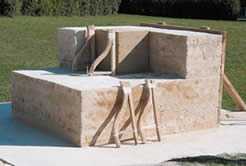
Battling Pseudo
The Great Pyramids are a very controversial subject. Whether a disagreement about their age, who built them, or their function, it seems as though everyone is an expert with no expertise. Today I wanted to discuss the material used to build the pyramids, which is primarily limestone blocks.
It has been proposed that the Egyptians, or whoever built the pyramids, cut blocks of limestone and dragged them across the desert where they hoisted 5 ton blocks into place. Many immediately raise a red flag stating certain things are impossible, even though modern people have tied ropes to 5 ton stones and successfully dragged them across soft sand. Even though a single man using the Herodotus machine can lift a 5 ton stone to basically any height he wants. Regardless, this doesn't appear to be the method used, or even the actual material.
When inspecting limestone in the same region as the pyramids, we notice the pyramids appear deteriorated to a much higher degree than the surrounding limestone rocks. This is why many have determined the age of the pyramids to be much older than most conclude. But things are not always what they seem. The brittle stones of the Great Pyramid have been closely inspected to understand exactly what material was used. In an attempt to locate the actual source, archaeologists found some interesting matter embedded in the blocks of stone themselves. Organic fiber, ash, animal bone and teeth, human hair, and all sorts of foreign organic material that is NEVER found inside typical limestone. Why would material that has been dated to be only 5000 years old, exist inside rock that is supposed to be hundreds of millions of years old? The answer is simple, the stones are not carved, they are casted from a geo-polymer mixture, aka cement.
It has now been determined that the stones used to construct the Great Pyramid were in fact casted and not carved. The University of Memphis Engineering Department has proposed the process in which these blocks were created. Much like 1500 years before the pyramids, the Sumerians used an early form of geo-polymer to construct their ziggurats. Same with some Mesoamerican cultures who casted stones to make intricate shapes which many claim can't be done with modern machinery.
This discovery will allow us to put this subject to rest, at least partially. Although I'm sure many will deny the facts because they WANT the answer to be something else, but bias doesn't influence truth, it only influences promoting pseudo.
#eatthefruitinc
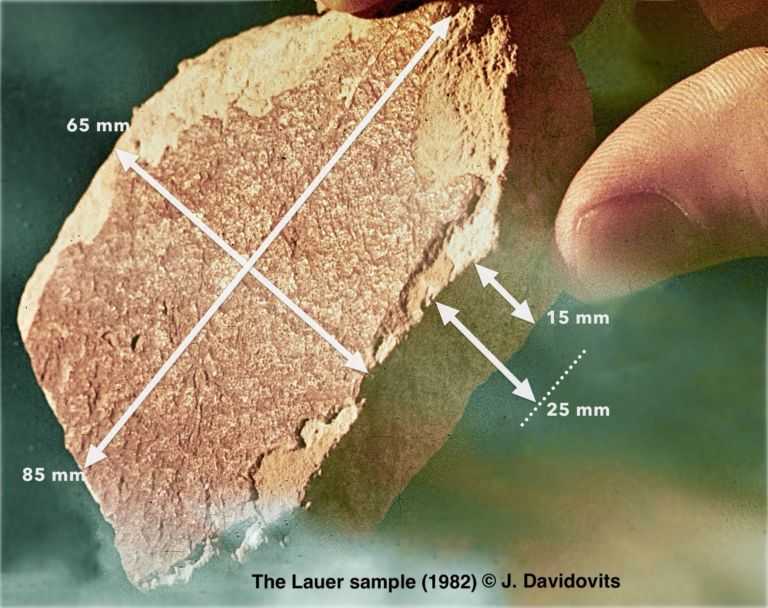
Battling Pseudo
The Great Pyramids are a very controversial subject. Whether a disagreement about their age, who built them, or their function, it seems as though everyone is an expert with no expertise. Today I wanted to discuss the material used to build the pyramids, which is primarily limestone blocks.
It has been proposed that the Egyptians, or whoever built the pyramids, cut blocks of limestone and dragged them across the desert where they hoisted 5 ton blocks into place. Many immediately raise a red flag stating certain things are impossible, even though modern people have tied ropes to 5 ton stones and successfully dragged them across soft sand. Even though a single man using the Herodotus machine can lift a 5 ton stone to basically any height he wants. Regardless, this doesn't appear to be the method used, or even the actual material.
When inspecting limestone in the same region as the pyramids, we notice the pyramids appear deteriorated to a much higher degree than the surrounding limestone rocks. This is why many have determined the age of the pyramids to be much older than most conclude. But things are not always what they seem. The brittle stones of the Great Pyramid have been closely inspected to understand exactly what material was used. In an attempt to locate the actual source, archaeologists found some interesting matter embedded in the blocks of stone themselves. Organic fiber, ash, animal bone and teeth, human hair, and all sorts of foreign organic material that is NEVER found inside typical limestone. Why would material that has been dated to be only 5000 years old, exist inside rock that is supposed to be hundreds of millions of years old? The answer is simple, the stones are not carved, they are casted from a geo-polymer mixture, aka cement.
It has now been determined that the stones used to construct the Great Pyramid were in fact casted and not carved. The University of Memphis Engineering Department has proposed the process in which these blocks were created. Much like 1500 years before the pyramids, the Sumerians used an early form of geo-polymer to construct their ziggurats. Same with some Mesoamerican cultures who casted stones to make intricate shapes which many claim can't be done with modern machinery.
This discovery will allow us to put this subject to rest, at least partially. Although I'm sure many will deny the facts because they WANT the answer to be something else, but bias doesn't influence truth, it only influences promoting pseudo.
#eatthefruitinc
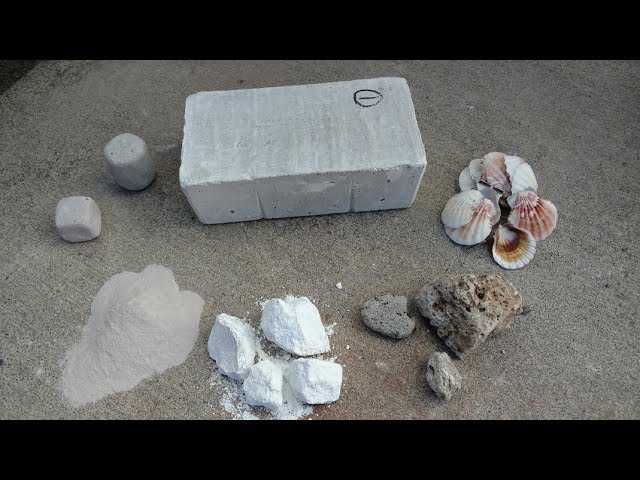
Battling Pseudo
The Great Pyramids are a very controversial subject. Whether a disagreement about their age, who built them, or their function, it seems as though everyone is an expert with no expertise. Today I wanted to discuss the material used to build the pyramids, which is primarily limestone blocks.
It has been proposed that the Egyptians, or whoever built the pyramids, cut blocks of limestone and dragged them across the desert where they hoisted 5 ton blocks into place. Many immediately raise a red flag stating certain things are impossible, even though modern people have tied ropes to 5 ton stones and successfully dragged them across soft sand. Even though a single man using the Herodotus machine can lift a 5 ton stone to basically any height he wants. Regardless, this doesn't appear to be the method used, or even the actual material.
When inspecting limestone in the same region as the pyramids, we notice the pyramids appear deteriorated to a much higher degree than the surrounding limestone rocks. This is why many have determined the age of the pyramids to be much older than most conclude. But things are not always what they seem. The brittle stones of the Great Pyramid have been closely inspected to understand exactly what material was used. In an attempt to locate the actual source, archaeologists found some interesting matter embedded in the blocks of stone themselves. Organic fiber, ash, animal bone and teeth, human hair, and all sorts of foreign organic material that is NEVER found inside typical limestone. Why would material that has been dated to be only 5000 years old, exist inside rock that is supposed to be hundreds of millions of years old? The answer is simple, the stones are not carved, they are casted from a geo-polymer mixture, aka cement.
It has now been determined that the stones used to construct the Great Pyramid were in fact casted and not carved. The University of Memphis Engineering Department has proposed the process in which these blocks were created. Much like 1500 years before the pyramids, the Sumerians used an early form of geo-polymer to construct their ziggurats. Same with some Mesoamerican cultures who casted stones to make intricate shapes which many claim can't be done with modern machinery.
This discovery will allow us to put this subject to rest, at least partially. Although I'm sure many will deny the facts because they WANT the answer to be something else, but bias doesn't influence truth, it only influences promoting pseudo.
#eatthefruitinc

Battling Pseudo
The Great Pyramids are a very controversial subject. Whether a disagreement about their age, who built them, or their function, it seems as though everyone is an expert with no expertise. Today I wanted to discuss the material used to build the pyramids, which is primarily limestone blocks.
It has been proposed that the Egyptians, or whoever built the pyramids, cut blocks of limestone and dragged them across the desert where they hoisted 5 ton blocks into place. Many immediately raise a red flag stating certain things are impossible, even though modern people have tied ropes to 5 ton stones and successfully dragged them across soft sand. Even though a single man using the Herodotus machine can lift a 5 ton stone to basically any height he wants. Regardless, this doesn't appear to be the method used, or even the actual material.
When inspecting limestone in the same region as the pyramids, we notice the pyramids appear deteriorated to a much higher degree than the surrounding limestone rocks. This is why many have determined the age of the pyramids to be much older than most conclude. But things are not always what they seem. The brittle stones of the Great Pyramid have been closely inspected to understand exactly what material was used. In an attempt to locate the actual source, archaeologists found some interesting matter embedded in the blocks of stone themselves. Organic fiber, ash, animal bone and teeth, human hair, and all sorts of foreign organic material that is NEVER found inside typical limestone. Why would material that has been dated to be only 5000 years old, exist inside rock that is supposed to be hundreds of millions of years old? The answer is simple, the stones are not carved, they are casted from a geo-polymer mixture, aka cement.
It has now been determined that the stones used to construct the Great Pyramid were in fact casted and not carved. The University of Memphis Engineering Department has proposed the process in which these blocks were created. Much like 1500 years before the pyramids, the Sumerians used an early form of geo-polymer to construct their ziggurats. Same with some Mesoamerican cultures who casted stones to make intricate shapes which many claim can't be done with modern machinery.
This discovery will allow us to put this subject to rest, at least partially. Although I'm sure many will deny the facts because they WANT the answer to be something else, but bias doesn't influence truth, it only influences promoting pseudo.
#eatthefruitinc
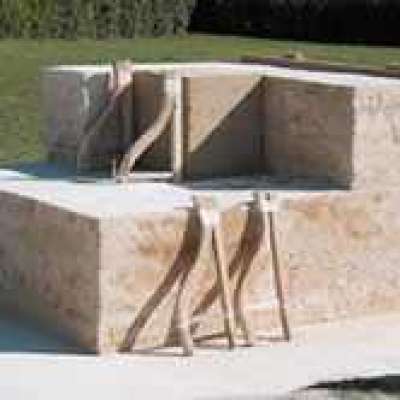
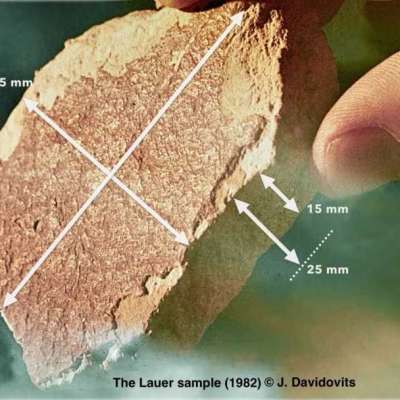

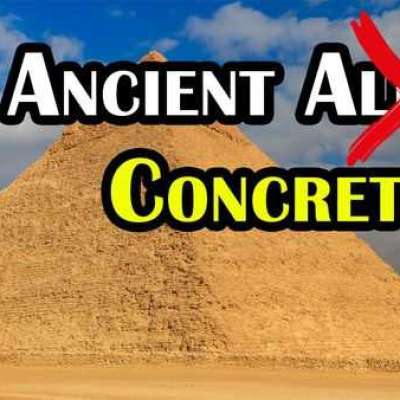
Perbelle CC Cream Review | #perbellecccream #perbellecccreamreview #coverage #hydration #spf43 #pigmentation #antiinflammatoryagents #antioxidants #itiseasytoapply #itislonglasting #itisaffordable #itissafe #price
And a beautiful Irish...
well it took 5 to make a beautiful one! 🤣🥃 #irish #irishcoffee #whisky
